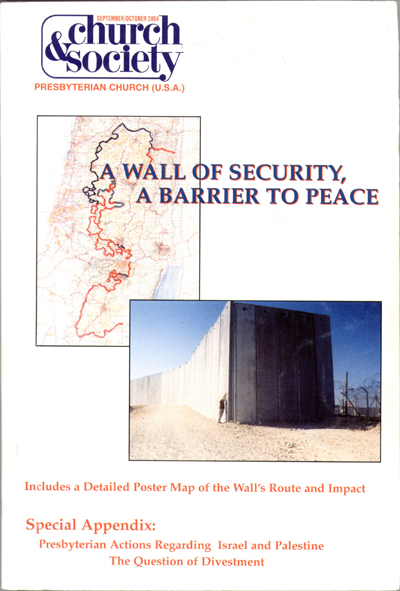Palestinian Christian activists and their allies have a difficult time describing the security barrier accurately. They describe the barrier as completely surrounding Bethlehem when in fact it does not.
Bishara Awad, president of the Bethlehem Bible College has uttered this falsehood, as has his son, Sami Awad, director of the Holy Land Trust. Both Bishara and Sami live in Bethlehem.
Lutheran Bishop Margaret Payne has also uttered this falsehood and has refused to retract it when challenged by CAMERA. The news show 60 Minutes has made the same false statement and has refused to correct.
Now it is Diyar, a Bethlehem-based consortium led by Lutheran Pastor Mitri Raheb that is broadcasting this falsehood.
Diyar bills itself as “a group of Lutheran-based, ecumenically-oriented institutions serving the whole Palestinian community ‘from the womb to the tomb’, with an emphasis on children, youth, women & elders.” In a Diyar-produced video posted on Youtube on Jan. 18, 2012, a narrator states the following:
The city of Bethlehem, birthplace of Jesus Christ and home to more than 40,000, is now encircled by an eight-meter high concrete wall. This apartheid wall as many have come to call it, has turned Bethlehem into a walled ghetto, cutting through Palestinian land, destroying neighborhoods and imprisoning its population.
This statement is false in two ways. First of all, not all of the barrier is comprised of a concrete wall. Much of the barrier is built with a security fence. Secondly, the barrier does not “encircle” Bethlehem but instead passes by its northern and western sides.
The falsehood appeared again in a letter sent by newly-minted Diyar employee, Rev. Victor Makari, Ph.D.
Makari, who currently works as regional consultant for the Religion and State Program for Diyar, mischaracterized the security barrier in a June 23, 2012 letter to his supporters in the U.S.
Makari, who previously worked for the Presbyterian Church (USA), Makari wrote that he was
…humbled and encouraged daily by the endurance and tenacity of hope of our Palestinian neighbors, living within the confines and restrictions of the Israeli Occupation – a 25-ft-high concrete wall that has surrounded the West Bank and enclosed Bethlehem for 10 years now…
Makari’s description of the security barrier is inaccurate in three ways.
First, he characterizes the security barrier as “a 25-foot concrete wall,” when in fact the vast majority of the barrier is comprised of a security fence, not a concrete wall.
Second, Makari says the concrete wall “has surrounded the West Bank” for 10 years.
Wrong again. The wall does not “surround” the West Bank. There is no barrier whatsoever between the West Bank and Jordan, for example.
And lastly, he says the concrete wall has “enclosed Bethlehem for 10 years now.”
No, it doesn’t. As stated above, the barrier passes by the northern and western sections of the city. Bethlehem’s eastern and southern perimeters are not enclosed by a barrier.
Makari will have a tough time claiming ignorance about these issues.
Makari, was the “content editor” for the September/October 2004 issue of the PC(USA)’s Church & Society that was devoted entirely to the security barrier and its impact on Palestinians in the West Bank. (An image of the journal’s cover can be seen at the bottom of this article.)
It is unlikely that Makari could have edited this publication and not known the actual route of the security barrier, nor could have remained ignorant of how it was actually constructed. On page 13 of this publication, a B’Tselem article reports that the “main component of the barrier is an electronic fence that will give warning of every attempt to cross it.”

